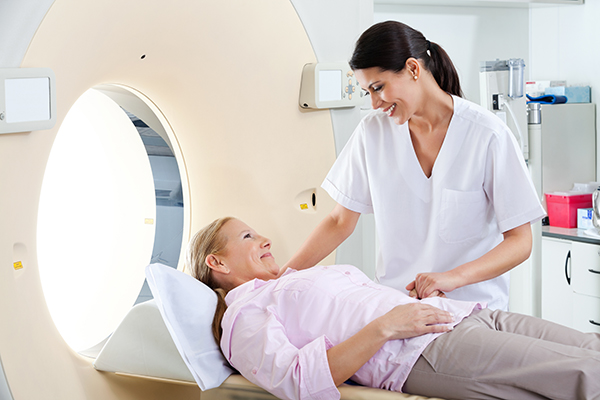
You have probably heard of a CT scan, CAT scan, MRI, and X-Ray, but you may have no clue what the difference between the four are. All these different types of imaging can be easily confused. We wanted to help clarify this, so we created a beginners guide to understanding a CT Scan.
What is a CT scan?
First things first, what does CT even stand for? The answer is Computerized Tomography. A CT scan is a process used to create diagnostic images of any part of your body. It does this through combining a series of x-rays that are from different angles.
How does a CT scan work?
For a CT scan you normally lay flat on your back on a table. Then you are pushed slowly through a hole in the machine. While you’re being pushed through, x-rays rotate all around you in order to capture images at different angles. All of these angles are then put together by a computer so a doctor can look at either the 2-D image or the 3-D image that is created when all the images are compiled. It is important to be as still as possible during the scan, and sometimes you may even be asked to hold your breath by the doctors. One thing that the technicians may be do to ensure you stay still and in the correct position is fasten you to the table with straps. The reason for this is that if the resulting images come out blurry or unclear in any way, the scan most likely will need to be repeated.
Is a CT scan and a CAT scan the same thing?
These two can be confusing because their names are so close. The reason their names are so close is because they are the same thing! A CAT scan is just another name for a CT scan!
What do doctors use a CT scan for?
Although a CT scan gives off a small amount of radiation, doctors have concluded that the benefits that it gives outweigh the small risk that comes from the radiation. Doctors are able to use CT scans to help diagnose muscle and bone disorders, find the location of a tumor, infection or blood clot, guide various procedures, detect and monitor certain conditions, monitor the effectiveness of treatments, and detect internal injuries or bleeding. This is why a lot of times if an accident victim comes into the hospital they will do a CT scan. It can give them a lot of information in a short amount of time.
Do you have to take a contrast?
A contrast is something your doctor may have you drink or put in your system with an IV in order to better appear on the images. The contrast you’d be given block out x-rays and appears white on the images, better highlighting what the doctors are looking for. That being said, it is not necessary for every CT scan, it just depends on the doctor and what they are looking for.
What can a CT scan show?
A CT scan can show bone and joint issues such as tumors or fractures. It can also show if you have cancer, heart disease, emphysema, or liver masses. CT scans can also show any internal bleeding or other internal injuries that may have resulted from a car accident.
What do you do during the scan and how long should it take?
During a CT scan, you normally lie flat on your back on a table, trying to be as still as you can. Since the table passes through the machine, it is a relatively quick process. Normally a CT scan can be completely finished within 30 minutes as long as the images come out clear.
What should you disclose to your doctor before your CT scan?
Due to the radiation given off during the scan, let you doctor know any of the following. If you are pregnant you should not get a CT scan unless it is absolutely necessary as it can cause damage to the baby. If a child is the one needing the scan, ask your doctor about setting the radiation so it is not as powerful, as children are not as resistant to the radiation given off as adults are. Also, let your doctor know if you have diabetes and are take Metformin, or if you have any sort of kidney issues.
How is a CT scan different from a normal X-Ray?
When it comes down to it, a CT scan is much more detailed in the images it produces when compared to a normal x-ray. Whereas a regular x-ray really just shows bone damages, a CT scan also shows organs, and shows more detail in the vertebrae of the spine.
Sources:
https://www.webmd.com/cancer/what-is-a-ct-scan#3
https://www.mayoclinic.org/tests-procedures/ct-scan/about/pac-20393675
https://www.radiologyinfo.org/en/info.cfm?pg=bodyct
https://uamshealth.com/medicalservices/radiology/ctscanfrequentlyaskedquestions/



0 comments
Write a comment